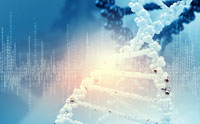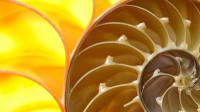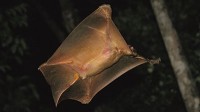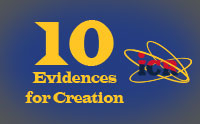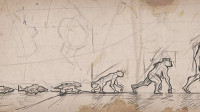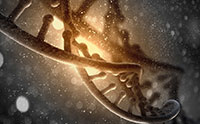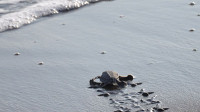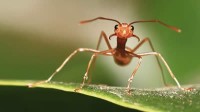Secular astrophysicists often talk about “primordial nucleosynthesis” as though it were a proven historical event. In theory, it describes how certain conditions during an early Big Bang universe somehow cobbled together the first elements. But no historical evidence corroborates this primordial nucleosynthesis, an idea beset by a theoretical barrier called the “lithium problem.” Secular scientists recently put this problem to a practical test. More… …read more Read more here: icr.org
From various problems in cosmology a need has developed to postulate the existence of unknown types of energy and matter from the dark side. …read more Read more here: AIG Daily
Researchers say that cliff swallows are ‘evolving’ shorter wings to avoid being killed by fast-moving vehicles. …read more Read more here: creation.com
One-cell creatures called ciliates are expanding the concept of genome complexity at an exponential rate. Now a newly sequenced ciliate genome reveals unimaginable levels of programmed rearrangement combined with an ingenious system of encryption. More… …read more Read more here: icr.org
Surprising evolutionists but not biblical creationists, scientists have discovered an additional layer of information in DNA. …read more Read more here: AIG Daily
How do you go from ‘flat’ oysters to coiled shells? …read more Read more here: creation.com
Social psychologists are tracking IQ scores and noticed a decline in the last decade after a steady rise since the 1950s. Some wonder if the recent downturn reflects genes that have been eroding all along. Are we evolving stupidity? More… …read more Read more here: icr.org
Did caffeine evolve again and again or did our Common Designer provide many plants with the genes to make it? …read more Read more here: AIG Daily
When added to previously determined kinds of extant anurans, caudates, and gymnophionans, a total of 248 amphibian kinds may have been brought on board the Ark. …read more Read more here: AIG Daily
Five seafloor scour troughs show tell-tale signs of having been gouged out by colossal icebergs. But none of today’s icebergs are nearly big enough to scour the seafloor at such a great depth. More… …read more Read more here: icr.org
The colugo glides like no other mammal on earth and proves that our ingenious Creator knows how to surprise us. …read more Read more here: AIG Daily
Get some fast facts on the evidences for creation science! More… …read more Read more here: icr.org
Dreadnoughtus was a gigantic titanosaurian sauropod dinosaur that was wonderfully preserved in sedimentary rock but is not evidence of evolution but of creation and Noah’s Flood. …read more Read more here: creation.com
Will fish out of water evolve? …read more Read more here: AIG Daily
A physicist makes clear that the essence of science is gathering data and interpreting that data in ways that are often insufficient, limited, and changeable. …read more Read more here: AIG Daily
Evidence of runoff from Noah’s Flood …read more Read more here: creation.com
In spite of numerous attempts for over 60 years to determine the 87Rb half-life and decay constant, there is still no consensus. …read more Read more here: AIG Daily
Discoveries of DNA sequences that contain different languages, each one with multiple purposes, are utterly defying evolutionary predictions. What was once hailed as redundant code is proving to be key in protein production. More… …read more Read more here: icr.org
Creationists have recently considered impact cratering in the solar system occurring during the fourth day of the Creation Week. …read more Read more here: AIG Daily
What do erosional features on the earth’s surface suggest for the placement of the post-Flood boundary in the rock record? …read more Read more here: creation.com
Did you ever wonder how instincts are passed down from mothers to their offspring? …read more Read more here: AIG Daily
Certain types of fungi can be parasitic to both plants and animals. Two new studies show that this has developed, in part, by a loss of genetic information—not a gain as predicted by evolution. More… …read more Read more here: icr.org
Alone in the ocean depths swims the largest creature that has ever lived on land or sea. …read more Read more here: AIG Daily
Most birds are blind to sweets. But hummingbirds are experts at telling what is sweet and even fending off fakes. …read more Read more here: AIG Daily
One reason ants are so successful is because of their ability to communicate with each other. …read more Read more here: AIG Daily
Certain types of fungi can be parasitic to both plants and animals. Two new studies show that this has developed, in part, by a loss of genetic information—not a gain as predicted by evolution. More… …read more Read more here: icr.org
Hybrid of arthropod exoskeleton and silk is about as strong and tough as an aluminium alloy, but is only half as dense. …read more Read more here: creation.com























